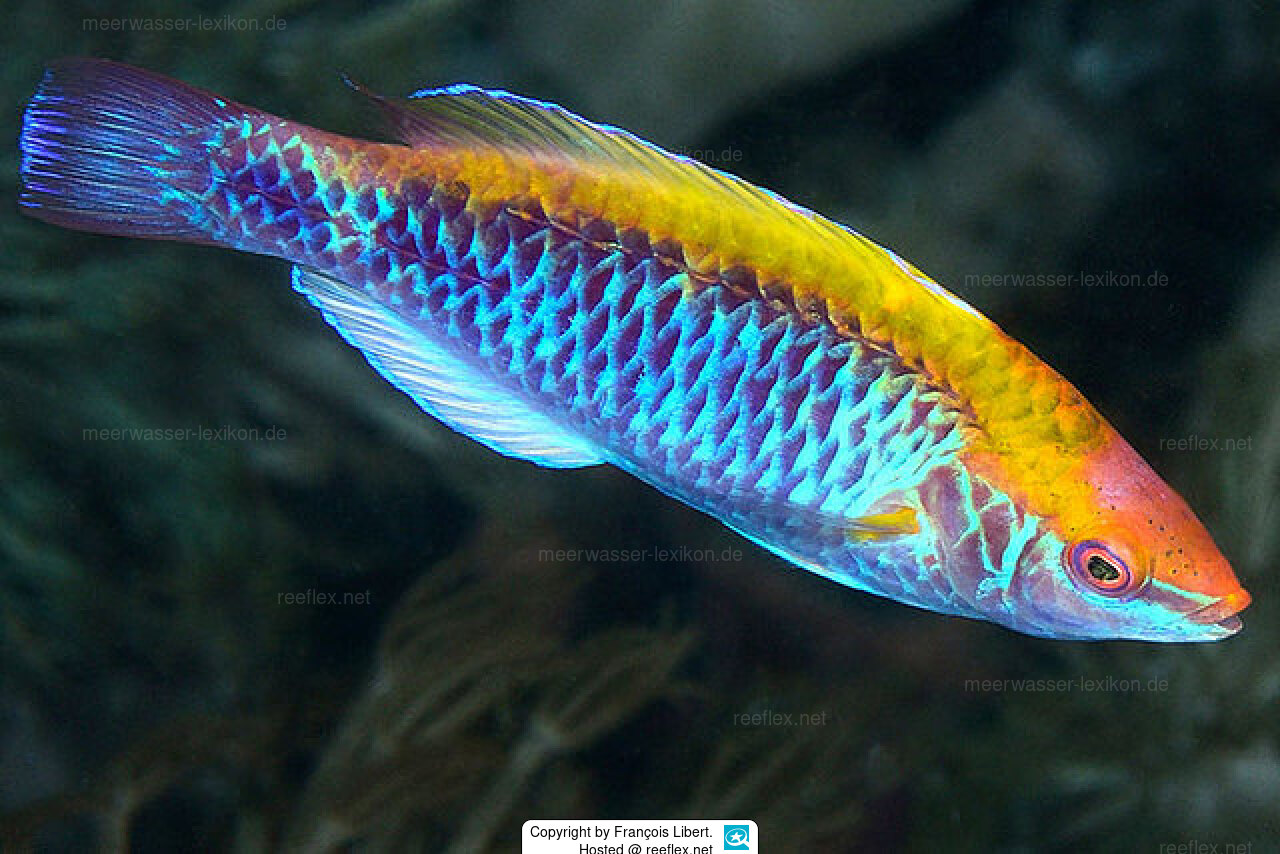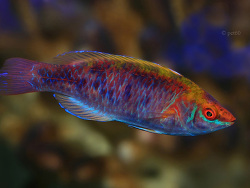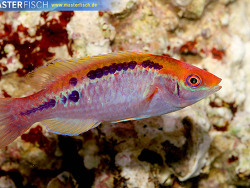Info
Randall & Carpenter, 1980
Like all Cirrhilabrus sensitive during transport and acclimation. After that not difficult to keep.
Male ones are more colored than female ones. Expensive fish, but very beautyful colored and rarely to find. Do not keep as single. They will jump!
Classification: Biota > Animalia (Kingdom) > Chordata (Phylum) > Vertebrata (Subphylum) > Gnathostomata (Superclass) > Pisces (Superclass) > Actinopterygii (Class) > Perciformes (Order) > Labridae (Family) > Cirrhilabrus (Genus) > Cirrhilabrus lubbocki (Species)
Jumping guard
A jumping guard prevents (nocturnal) fish from jumping out.
Wrasses, blennies, hawkfishs and gobies jump out of an unprotected tank in fright if their night rest is disturbed, unfortunately these jumpers are found dried up in the morning on carpets, glass edges or later behind the tank.
https://www.korallenriff.de/en/article/1925_5_Jump_Protection_Solutions_for_Fish_in_the_Aquarium__5_Net_Covers.html
A small night light also helps, as it provides the fish with a means of orientation in the dark!
Like all Cirrhilabrus sensitive during transport and acclimation. After that not difficult to keep.
Male ones are more colored than female ones. Expensive fish, but very beautyful colored and rarely to find. Do not keep as single. They will jump!
Classification: Biota > Animalia (Kingdom) > Chordata (Phylum) > Vertebrata (Subphylum) > Gnathostomata (Superclass) > Pisces (Superclass) > Actinopterygii (Class) > Perciformes (Order) > Labridae (Family) > Cirrhilabrus (Genus) > Cirrhilabrus lubbocki (Species)
Jumping guard
A jumping guard prevents (nocturnal) fish from jumping out.
Wrasses, blennies, hawkfishs and gobies jump out of an unprotected tank in fright if their night rest is disturbed, unfortunately these jumpers are found dried up in the morning on carpets, glass edges or later behind the tank.
https://www.korallenriff.de/en/article/1925_5_Jump_Protection_Solutions_for_Fish_in_the_Aquarium__5_Net_Covers.html
A small night light also helps, as it provides the fish with a means of orientation in the dark!







 François Libert, Frankreich
François Libert, Frankreich
































































































